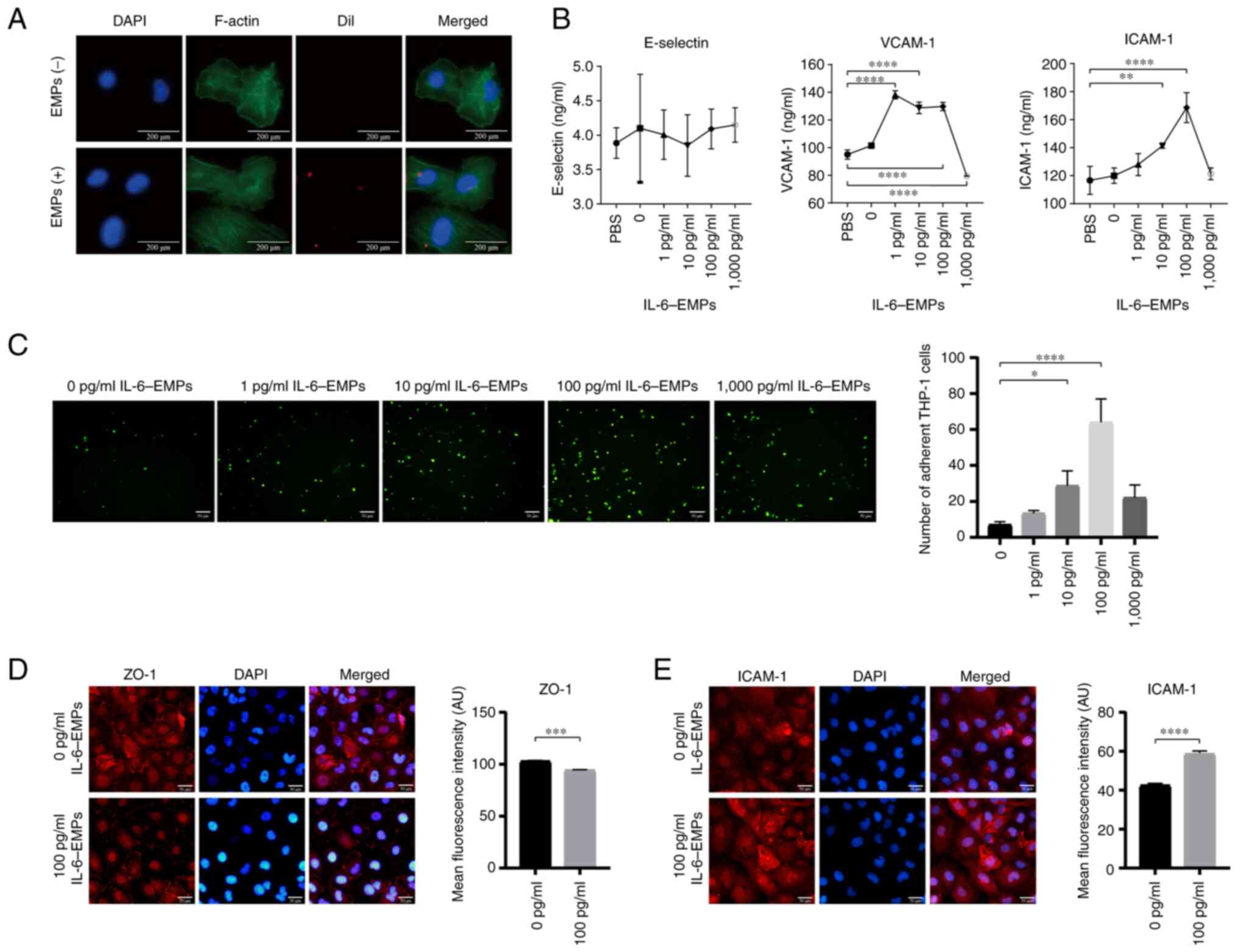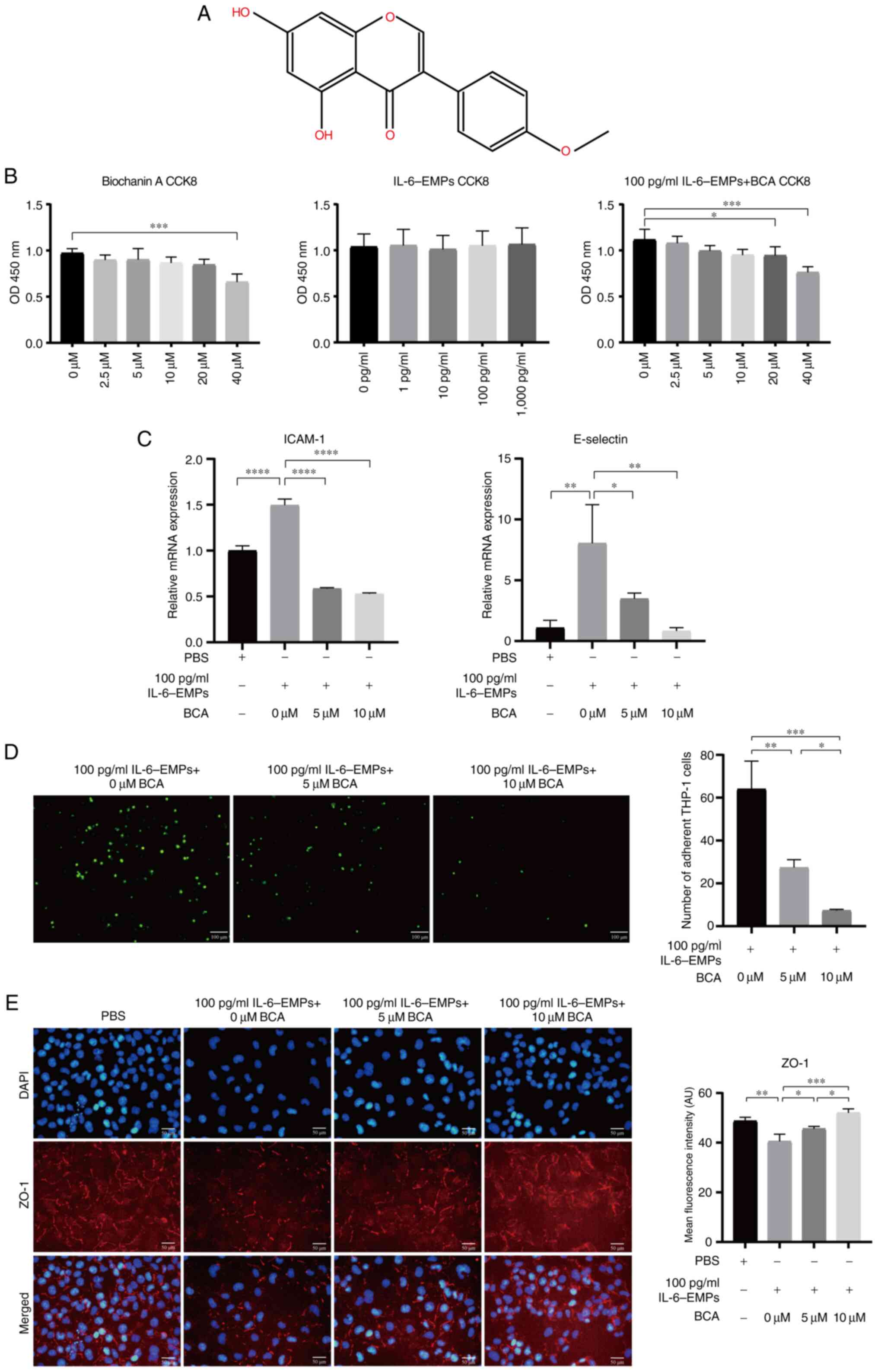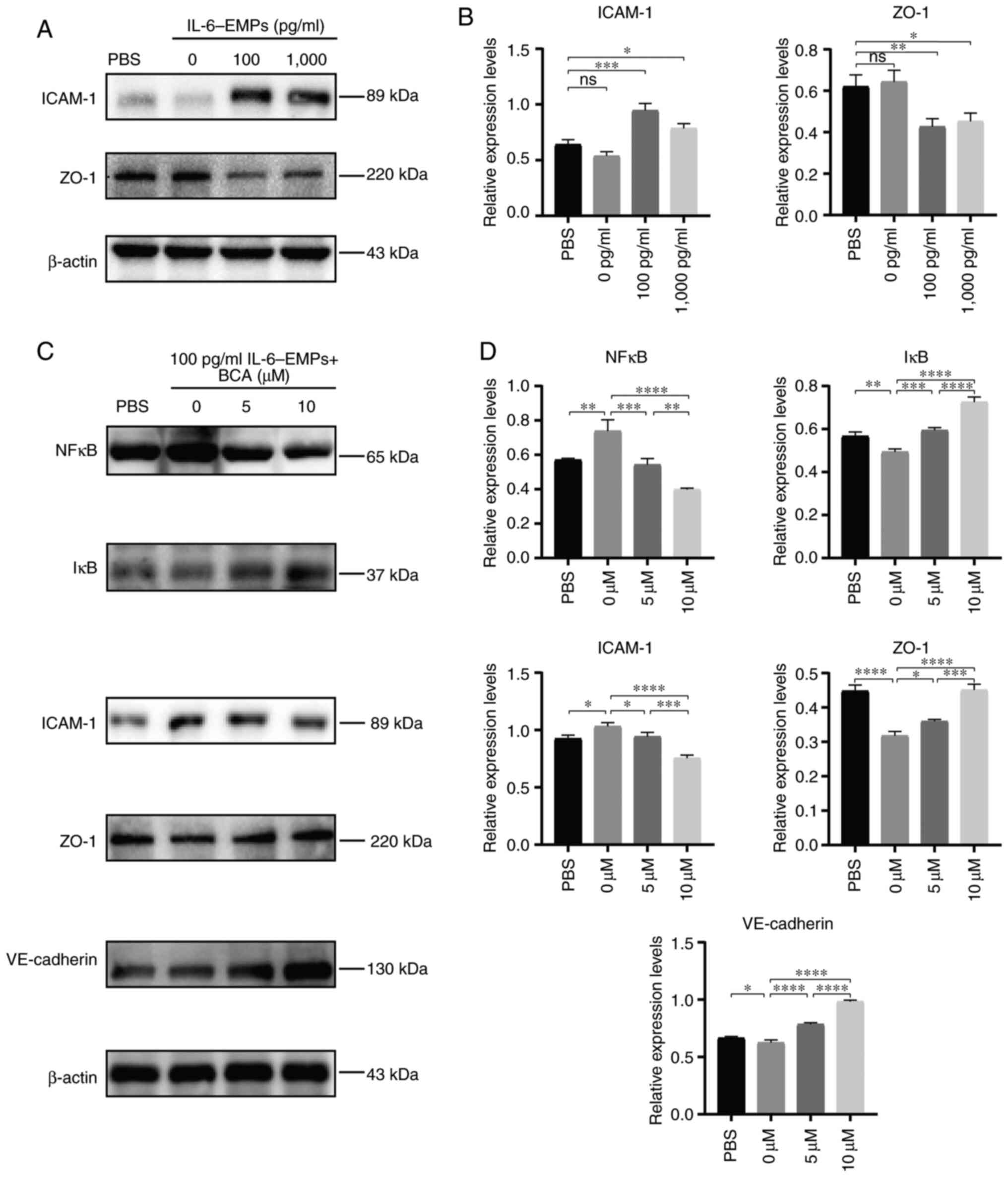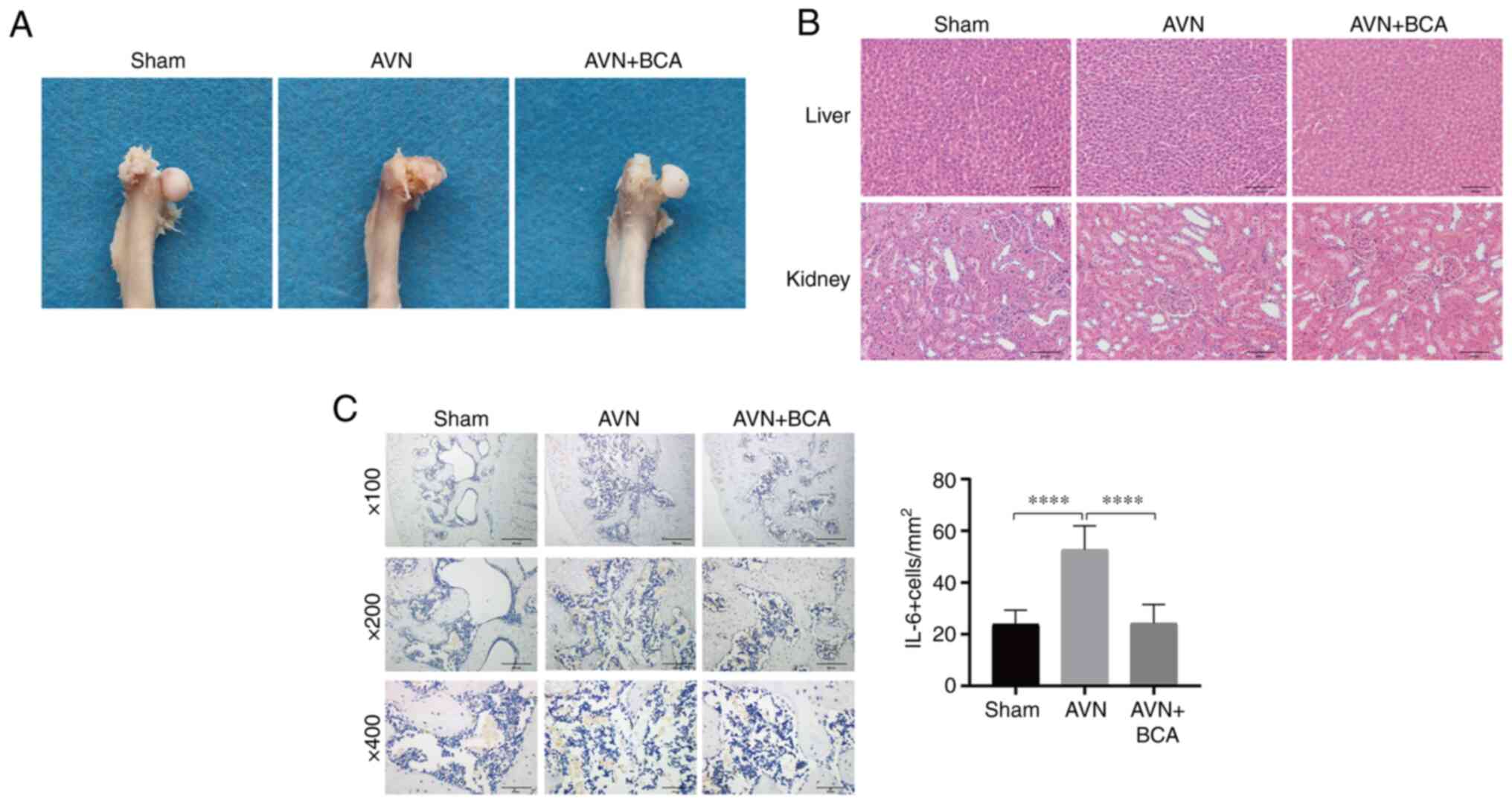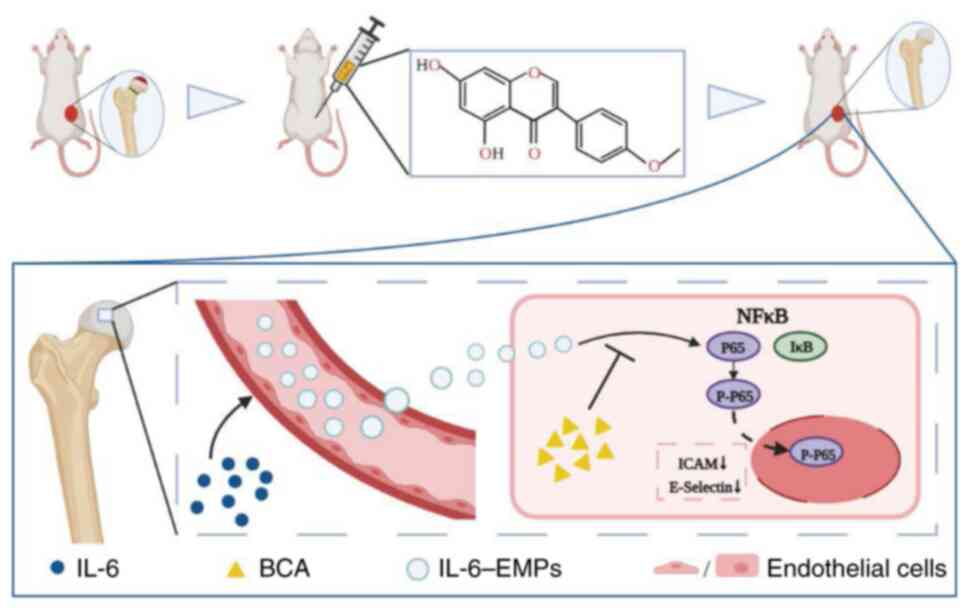|
1
|
Leroux J, Abu Amara S and Lechevallier J:
Legg-Calvé-Perthes disease. Orthop Traumatol Surg Res.
104:S107–S112. 2018.PubMed/NCBI View Article : Google Scholar
|
|
2
|
Zhao Y, Liao S, Lu R, Dang H, Zhao J and
Ding X: Endothelial nitric oxide synthase gene polymorphism is
associated with Legg-Calvé-Perthes disease. Exp Ther Med.
11:1913–1917. 2016.PubMed/NCBI View Article : Google Scholar
|
|
3
|
Kim S, Oh H, Lim J, Cho S and Jung S:
Results of early proximal femoral osteotomy at skeletal maturity in
Legg-Calvé-Perthes disease: Implication for the bypass of
fragmentation stage. J Pediatr Orthop. 41:e768–e773.
2021.PubMed/NCBI View Article : Google Scholar
|
|
4
|
Little D, McDonald M, Sharpe I, Peat R,
Williams P and McEvoy T: Zoledronic acid improves femoral head
sphericity in a rat model of perthes disease. J Orthop Res.
23:862–868. 2005.PubMed/NCBI View Article : Google Scholar
|
|
5
|
Kim HKW, Randall TS, Bian H, Jenkins J,
Garces A and Bauss F: Ibandronate for prevention of femoral head
deformity after ischemic necrosis of the capital femoral epiphysis
in immature pigs. J Bone Joint Surg Am. 87:550–557. 2005.PubMed/NCBI View Article : Google Scholar
|
|
6
|
Johnson CP, Wang L, Tóth F, Aruwajoye O,
Kirkham B, Carlson CS, Kim HKW and Ellermann JM: Quantitative
susceptibility mapping detects neovascularization of the epiphyseal
cartilage after ischemic injury in a piglet model of
Legg-Calvé-Perthes disease. J Magn Reson Imaging. 50:106–113.
2019.PubMed/NCBI View Article : Google Scholar
|
|
7
|
Perry DC, Green DJ, Bruce CE, Pope D,
Dangerfield P, Platt MJ, Hall AJ and Jones H: Abnormalities of
vascular structure and function in children with Perthes disease.
Pediatrics. 130:e126–e131. 2012.PubMed/NCBI View Article : Google Scholar
|
|
8
|
Kamiya N, Yamaguchi R, Adapala N, Chen E,
Neal D, Jack O, Thoveson A, Gudmundsson P, Brabham C, Aruwajoye O,
et al: Legg-Calvé-Perthes disease produces chronic hip synovitis
and elevation of interleukin-6 in the synovial fluid. J Bone Miner
Res. 30:1009–1013. 2015.PubMed/NCBI View Article : Google Scholar
|
|
9
|
Kamiya N, Kuroyanagi G, Aruwajoye O and
Kim HKW: IL6 receptor blockade preserves articular cartilage and
increases bone volume following ischemic osteonecrosis in immature
mice. Osteoarthritis Cartilage. 27:326–335. 2019.PubMed/NCBI View Article : Google Scholar
|
|
10
|
Kao CY and Papoutsakis ET: Extracellular
vesicles: Exosomes, microparticles, their parts, and their targets
to enable their biomanufacturing and clinical applications. Curr
Opin Biotechnol. 60:89–98. 2019.PubMed/NCBI View Article : Google Scholar
|
|
11
|
Deng F, Wang S and Zhang L: Endothelial
microparticles act as novel diagnostic and therapeutic biomarkers
of circulatory hypoxia-related diseases: A literature review. J
Cell Mol Med. 21:1698–1710. 2017.PubMed/NCBI View Article : Google Scholar
|
|
12
|
Li B, Huang Q, Lin C, Lu R, Wang T, Chen
X, Liu Z, Liu Y, Wu J, Wu Y, et al: Increased circulating
CD31+/CD42b-EMPs in Perthes disease and inhibit HUVECs angiogenesis
via endothelial dysfunction. Life Sci. 265(118749)2021.PubMed/NCBI View Article : Google Scholar
|
|
13
|
Liu XY, Zhang YB, Yang XW, Xu W, Liu L,
Zhang P, Gong Y, Liu NF and Peng KF: Simultaneous determination of
twenty-five compounds with anti-inflammatory activity in Spatholobi
Caulis by using an optimized UFLC-MS/MS method: An application to
pharmacokinetic study. J Pharm Biomed Anal.
204(114267)2021.PubMed/NCBI View Article : Google Scholar
|
|
14
|
Sarfraz A, Javeed M, Shah M, Hussain G,
Shafiq N, Sarfraz I, Riaz A, Sadiqa A, Zara R, Zafar S, et al:
Biochanin A: A novel bioactive multifunctional compound from
nature. Sci Total Environ. 722(137907)2020.PubMed/NCBI View Article : Google Scholar
|
|
15
|
Hsu YN, Shyu HW, Hu TW, Yeh JP, Lin YW,
Lee LY, Yeh YT, Dai HY, Perng DS, Su SH, et al: Anti-proliferative
activity of biochanin A in human osteosarcoma cells via
mitochondrial-involved apoptosis. Food Chem Toxicol. 112:194–204.
2018.PubMed/NCBI View Article : Google Scholar
|
|
16
|
Yu C, Zhang P, Lou L and Wang Y:
Perspectives regarding the role of biochanin A in humans. Front
Pharmacol. 10(793)2019.PubMed/NCBI View Article : Google Scholar
|
|
17
|
Khanna S, Stewart R, Gnyawali S, Harris H,
Balch M, Spieldenner J, Sen CK and Rink C: Phytoestrogen isoflavone
intervention to engage the neuroprotective effect of glutamate
oxaloacetate transaminase against stroke. FASEB J. 31:4533–4544.
2017.PubMed/NCBI View Article : Google Scholar
|
|
18
|
Liang F, Cao W, Huang Y, Fang Y, Cheng Y,
Pan S and Xu X: Isoflavone biochanin A, a novel nuclear factor
erythroid 2-related factor 2 (Nrf2)-antioxidant response element
activator, protects against oxidative damage in HepG2 cells.
Biofactors. 45:563–574. 2019.PubMed/NCBI View Article : Google Scholar
|
|
19
|
Hanski L, Genina N, Uvell H, Malinovskaja
K, Gylfe Å, Laaksonen T, Kolakovic R, Mäkilä E, Salonen J, Hirvonen
J, et al: Inhibitory activity of the isoflavone biochanin A on
intracellular bacteria of genus Chlamydia and initial development
of a buccal formulation. PLoS One. 9(e115115)2014.PubMed/NCBI View Article : Google Scholar
|
|
20
|
Jalaludeen AM, Ha WT, Lee R, Kim JH, Do
JT, Park C, Heo YT, Lee WY and Song H: Biochanin A ameliorates
arsenic-induced hepato- and hematotoxicity in rats. Molecules.
21(69)2016.PubMed/NCBI View Article : Google Scholar
|
|
21
|
Sangeethadevi G, V V SU, Jansy Isabella
RAR, Saravanan G, Ponmurugan P, Chandrasekaran P, Sengottuvelu S
and Vadivukkarasi S: Attenuation of lipid metabolic abnormalities,
proinflammatory cytokines, and matrix metalloproteinase expression
by biochanin-A in isoproterenol-induced myocardial infarction in
rats. Drug Chem Toxicol. 45:1951–1962. 2022.PubMed/NCBI View Article : Google Scholar
|
|
22
|
Xue Z, Li A, Zhang X, Yu W, Wang J, Li Y,
Chen K, Wang Z and Kou X: Amelioration of PM2.5-induced
lung toxicity in rats by nutritional supplementation with biochanin
A. Ecotoxicol Environ Saf. 202(110878)2020.PubMed/NCBI View Article : Google Scholar
|
|
23
|
Liao S, Feng W, Liu Y, Wang Z, Ding X,
Song F, Lin X, Song H, Kc A, Su Y, et al: Inhibitory effects of
biochanin A on titanium particle-induced osteoclast activation and
inflammatory bone resorption via NF-κB and MAPK pathways. J Cell
Physiol. 236:1432–1444. 2021.PubMed/NCBI View Article : Google Scholar
|
|
24
|
Kole L, Giri B, Manna SK, Pal B and Ghosh
S: Biochanin-A, an isoflavon, showed anti-proliferative and
anti-inflammatory activities through the inhibition of iNOS
expression, p38-MAPK and ATF-2 phosphorylation and blocking NFκB
nuclear translocation. Eur J Pharmacol. 653:8–15. 2011.PubMed/NCBI View Article : Google Scholar
|
|
25
|
Livak KJ and Schmittgen TD: Analysis of
relative gene expression data using real-time quantitative PCR and
the 2(-Delta Delta C(T)) method. Methods. 25:402–408.
2001.PubMed/NCBI View Article : Google Scholar
|
|
26
|
MacArthur Clark JA and Sun D: Guidelines
for the ethical review of laboratory animal welfare People's
Republic of China National Standard GB/T 35892-2018 [Issued 6
February 2018 Effective from 1 September 2018]. Animal Model Exp
Med. 3:103–113. 2020.PubMed/NCBI View Article : Google Scholar
|
|
27
|
Kilkenny C, Browne W, Cuthill IC, Emerson
M and Altman DG: NC3Rs Reporting Guidelines Working Group: Animal
research: Reporting in vivo experiments: the ARRIVE guidelines. J
Gene Med. 12:561–563. 2010.PubMed/NCBI View Article : Google Scholar
|
|
28
|
Norman D, Reis D, Zinman C, Misselevich I
and Boss JH: Vascular deprivation-induced necrosis of the femoral
head of the rat. An experimental model of avascular osteonecrosis
in the skeletally immature individual or Legg-Perthes disease. Int
J Exp Pathol. 79:173–181. 1998.PubMed/NCBI View Article : Google Scholar
|
|
29
|
Yu R, Ma C, Li G, Xu J, Feng D and Lan X:
Inhibition of toll-like receptor 4 signaling pathway accelerates
the repair of avascular necrosis of femoral epiphysis through
regulating macrophage polarization in Perthes disease. Tissue Eng
Regen Med. 20:489–501. 2023.PubMed/NCBI View Article : Google Scholar
|
|
30
|
Hawkins P, Armstrong R, Boden T, Garside
P, Knight K, Lilley E, Seed M, Wilkinson M and Williams RO:
Applying refinement to the use of mice and rats in rheumatoid
arthritis research. Inflammopharmacology. 23:131–150.
2015.PubMed/NCBI View Article : Google Scholar
|
|
31
|
Katri A, Dąbrowska A, Löfvall H, Ding M,
Karsdal MA, Andreassen KV, Thudium CS and Henriksen K: Combining
naproxen and a dual amylin and calcitonin receptor agonist improves
pain and structural outcomes in the collagen-induced arthritis rat
model. Arthritis Res Ther. 21(68)2019.PubMed/NCBI View Article : Google Scholar
|
|
32
|
Sun H, Zhang H, Li K, Wu H, Zhan X, Fang
F, Qin Y and Wei Y: ESM-1 promotes adhesion between monocytes and
endothelial cells under intermittent hypoxia. J Cell Physiol.
234:1512–1521. 2019.PubMed/NCBI View Article : Google Scholar
|
|
33
|
Moreno Grangeiro P, Rodrigues JC, de
Angeli LRA, Leão Filho H, Montenegro NB, Guarniero R, Dempsey M and
Kim HKW: Feasibility of magnetic resonance angiography in patients
with Legg-Calvé-Perthes disease. J Pediatr Orthop. 41:e774–e779.
2021.PubMed/NCBI View Article : Google Scholar
|
|
34
|
Kumar V, Ali S, Verma V and Singh A: Do
bisphosphonates alter the clinico-radiological profile of children
with Perthes disease? A systematic review and meta-analysis. Eur
Rev Med Pharmacol Sci. 25:4875–4894. 2021.PubMed/NCBI View Article : Google Scholar
|
|
35
|
Kuroyanagi G, Adapala NS, Yamaguchi R,
Kamiya N, Deng Z, Aruwajoye O, Kutschke M, Chen E, Jo C, Ren Y and
Kim HKW: Interleukin-6 deletion stimulates revascularization and
new bone formation following ischemic osteonecrosis in a murine
model. Bone. 116:221–231. 2018.PubMed/NCBI View Article : Google Scholar
|
|
36
|
Lugo-Gavidia LM, Burger D, Matthews VB,
Nolde JM, Galindo Kiuchi M, Carnagarin R, Kannenkeril D, Chan J,
Joyson A, Herat LY, et al: Role of microparticles in cardiovascular
disease: Implications for endothelial dysfunction, thrombosis, and
inflammation. Hypertension. 77:1825–1844. 2021.PubMed/NCBI View Article : Google Scholar
|
|
37
|
Yuana Y, Sturk A and Nieuwland R:
Extracellular vesicles in physiological and pathological
conditions. Blood Rev. 27:31–39. 2013.PubMed/NCBI View Article : Google Scholar
|
|
38
|
Jimenez JJ, Jy W, Mauro LM, Soderland C,
Horstman LL and Ahn YS: Endothelial cells release phenotypically
and quantitatively distinct microparticles in activation and
apoptosis. Thromb Res. 109:175–180. 2003.PubMed/NCBI View Article : Google Scholar
|
|
39
|
Hu X, Barnum SR, Wohler JE, Schoeb TR and
Bullard DC: Differential ICAM-1 isoform expression regulates the
development and progression of experimental autoimmune
encephalomyelitis. Mol Immunol. 47:1692–1700. 2010.PubMed/NCBI View Article : Google Scholar
|
|
40
|
Kesanakurti D, Chetty C, Rajasekhar
Maddirela D, Gujrati M and Rao JS: Essential role of cooperative
NF-κB and Stat3 recruitment to ICAM-1 intronic consensus elements
in the regulation of radiation-induced invasion and migration in
glioma. Oncogene. 32:5144–5155. 2013.PubMed/NCBI View Article : Google Scholar
|
|
41
|
Bonan S, Albrengues J, Grasset E, Kuzet S,
Nottet N, Bourget I, Bertero T, Mari B, Meneguzzi G and Gaggioli C:
Membrane-bound ICAM-1 contributes to the onset of proinvasive tumor
stroma by controlling acto-myosin contractility in
carcinoma-associated fibroblasts. Oncotarget. 8:1304–1320.
2017.PubMed/NCBI View Article : Google Scholar
|
|
42
|
Kim JY, Kim DH, Kim JH, Lee D, Jeon HB,
Kwon SJ, Kim SM, Yoo YJ, Lee EH, Choi SJ, et al: Soluble
intracellular adhesion molecule-1 secreted by human umbilical cord
blood-derived mesenchymal stem cell reduces amyloid-β plaques. Cell
Death Differ. 19:680–691. 2012.PubMed/NCBI View Article : Google Scholar
|
|
43
|
Li CH, Liao PL, Shyu MK, Liu CW, Kao CC,
Huang SH, Cheng YW and Kang JJ: Zinc oxide nanoparticles-induced
intercellular adhesion molecule 1 expression requires Rac1/Cdc42,
mixed lineage kinase 3, and c-Jun N-terminal kinase activation in
endothelial cells. Toxicol Sci. 126:162–172. 2012.PubMed/NCBI View Article : Google Scholar
|
|
44
|
Bui TM, Wiesolek HL and Sumagin R: ICAM-1:
A master regulator of cellular responses in inflammation, injury
resolution, and tumorigenesis. J Leukoc Biol. 108:787–799.
2020.PubMed/NCBI View Article : Google Scholar
|
|
45
|
Cook-Mills JM, Marchese ME and
Abdala-Valencia H: Vascular cell adhesion molecule-1 expression and
signaling during disease: Regulation by reactive oxygen species and
antioxidants. Antioxid Redox Signal. 15:1607–1638. 2011.PubMed/NCBI View Article : Google Scholar
|
|
46
|
Meigs JB, Hu FB, Rifai N and Manson JE:
Biomarkers of endothelial dysfunction and risk of type 2 diabetes
mellitus. JAMA. 291:1978–1986. 2004.PubMed/NCBI View Article : Google Scholar
|
|
47
|
Dessein PH, Joffe BI and Singh S:
Biomarkers of endothelial dysfunction, cardiovascular risk factors
and atherosclerosis in rheumatoid arthritis. Arthritis Res Ther.
7:R634–R643. 2005.PubMed/NCBI View
Article : Google Scholar
|
|
48
|
Li C, Zhang Y, Liu R and Mai Y: Anagliptin
protected against hypoxia/reperfusion-induced brain vascular
endothelial permeability by increasing ZO-1. ACS Omega.
6:7771–7777. 2021.PubMed/NCBI View Article : Google Scholar
|
|
49
|
Urquiza-Fornovi I, Redondo-Alamillos M,
García-Recuero I and Romance-García A: Mandible fracture in a child
with osteogenesis imperfecta on bisphosphonates. Open versus closed
treatment? A case report. Dent Traumatol. 36:692–696.
2020.PubMed/NCBI View Article : Google Scholar
|
|
50
|
Malmgren B, Tsilingaridis G,
Monsef-Johansson N, Qahtani ZHA, Dahllöf G and Åström E:
Bisphosphonate therapy and tooth development in children and
adolescents with osteogenesis imperfecta. Calcif Tissue Int.
107:143–150. 2020.PubMed/NCBI View Article : Google Scholar
|
|
51
|
Nasomyont N, Hornung LN and Wasserman H:
Intravenous bisphosphonate therapy in children with spinal muscular
atrophy. Osteoporos Int. 31:995–1000. 2020.PubMed/NCBI View Article : Google Scholar
|
|
52
|
Chen YP, Tan A, Ho WP, Chuang TY, Chen C
and Chen CH: Effectiveness of strontium ranelate in the treatment
of rat model of Legg-Calve-Perthes disease. Indian J Orthop.
52:380–386. 2018.PubMed/NCBI View Article : Google Scholar
|
|
53
|
Ming X, Ding M, Zhai B, Xiao L, Piao T and
Liu M: Biochanin A inhibits lipopolysaccharide-induced inflammation
in human umbilical vein endothelial cells. Life Sci. 136:36–41.
2015.PubMed/NCBI View Article : Google Scholar
|
|
54
|
Oh JS, Cho IA, Kang KR, You JS, Yu SJ, Lee
GJ, Seo YS, Kim CS, Kim DK, Kim SG, et al: Biochanin-A antagonizes
the interleukin-1β-induced catabolic inflammation through the
modulation of NFκB cellular signaling in primary rat chondrocytes.
Biochem Biophys Res Commun. 477:723–730. 2016.PubMed/NCBI View Article : Google Scholar
|
|
55
|
Li Y, Dong J, Shang Y, Zhao Q, Li P and Wu
B: Anti-inflammatory effects of hederagenin on diabetic
cardiomyopathy via inhibiting NF-κB and Smads signaling pathways in
a type-2 diabetic mice model. RSC Adv. 9:26238–26247.
2019.PubMed/NCBI View Article : Google Scholar
|
|
56
|
Wang J, Wu ML, Cao SP, Cai H, Zhao ZM and
Song YH: Cycloastragenol ameliorates experimental heart damage in
rats by promoting myocardial autophagy via inhibition of
AKT1-RPS6KB1 signaling. Biomed Pharmacother. 107:1074–1081.
2018.PubMed/NCBI View Article : Google Scholar
|
|
57
|
Li ZH, Shi Z, Tang S, Yao HP, Lin X and Wu
F: Epigallocatechin-3-gallate ameliorates LPS-induced inflammation
by inhibiting the phosphorylation of Akt and ERK signaling
molecules in rat H9c2 cells. Exp Ther Med. 20:1621–1629.
2020.PubMed/NCBI View Article : Google Scholar
|
|
58
|
Xi Y, Miao Y, Zhou R, Wang M, Zhang F, Li
Y, Zhang Y, Yang H and Guo F: Exploration of the specific pathology
of HXMM tablet against retinal injury based on drug attack model to
network robustness. Front Pharmacol. 13(826535)2022.PubMed/NCBI View Article : Google Scholar
|
|
59
|
Feng L, Zhu MM, Zhang MH, Wang RS, Tan XB,
Song J, Ding SM, Jia XB and Hu SY: Protection of glycyrrhizic acid
against AGEs-induced endothelial dysfunction through inhibiting
RAGE/NF-κB pathway activation in human umbilical vein endothelial
cells. J Ethnopharmacol. 148:27–36. 2013.PubMed/NCBI View Article : Google Scholar
|
|
60
|
Zhu J, Xu Y, Ren G, Hu X, Wang C, Yang Z,
Li Z, Mao W and Lu D: Tanshinone IIA Sodium sulfonate regulates
antioxidant system, inflammation, and endothelial dysfunction in
atherosclerosis by downregulation of CLIC1. Eur J Pharmacol.
815:427–436. 2017.PubMed/NCBI View Article : Google Scholar
|
|
61
|
Li MT, Ke J, Guo SF, Wu Y, Bian YF, Shan
LL, Liu QY, Huo YJ, Guo C, Liu MY, et al: The protective effect of
quercetin on endothelial cells injured by hypoxia and
reoxygenation. Front Pharmacol. 12(732874)2021.PubMed/NCBI View Article : Google Scholar
|
|
62
|
Yamaguchi R, Kamiya N, Kuroyanagi G, Ren Y
and Kim HKW: Development of a murine model of ischemic
osteonecrosis to study the effects of aging on bone repair. J
Orthop Res. 39:2663–2670. 2021.PubMed/NCBI View Article : Google Scholar
|
|
63
|
Kamiya N, Yamaguchi R, Aruwajoye O,
Adapala NS and Kim HKW: Development of a mouse model of ischemic
osteonecrosis. Clin Orthop Relat Res. 473:1486–1498.
2015.PubMed/NCBI View Article : Google Scholar
|















